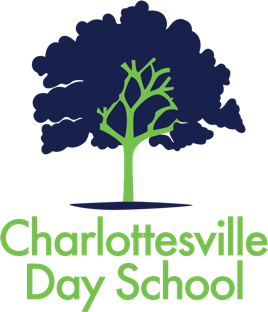Kindergarten
Kindergarteners enjoy a rich and varied curriculum that builds a solid foundation of learning.
Language Arts
Language Arts in Kindergarten is where children are introduced to the wonder of words. In an intentional print rich environment, children fall in love with books read by their teachers, and begin to venture out independently into their own world of stories. Students learn to recognize that reading allows the world to unfold. Writing becomes a group experience, as children understand that their ideas can be transformed into stories, which are meant to be shared and enjoyed. Reading and writing are expertly integrated into every subject area in order for students to understand the importance of language and communication.
Social Studies
Kindergarteners at CDS begin to recognize that they are members of several communities including home, school, and city. They carry out tasks that validate them as valuable members of each of their environments. Students understand the big impact of leaders, both from the past and present and begin making connections to their own role in making history happen. History comes alive through songs, poems, pictures, and words.
Kindergarteners are encouraged to share big thoughts and big ideas like the historians who came before them. Students embrace the concept that the events and people who came before them shaped the world they live in today.
Examples of Learning
- Students listen to stories about famous Americans and create art projects that highlight the unique contributions of these influential individuals
- Students learn vital communication skills and recognize that their interactions are meaningful and valuable
- Students learn vital communication skills and recognize that their interactions are meaningful and valuable
- Students understand that historic events have a cause and effect
- Students recognize their place in history by creating timelines that highlight important personal events in their own lives
- Students take their first steps into historical investigations by participating in and observing projects and performances in the Upper Elementary and Middle School classrooms
- Students explore national holidays, including but not limited to Thanksgiving, Martin Luther King Jr. Day, President’s Day and Independence Day, and understand that they are part of a vibrant national community
Math
In Kindergarten, students learn that numbers can communicate as much as words can. Through interactive activities, games, literature and conversations, children fall in love with the language of mathematics. Students work beyond counting from one to ten, and are immersed in deep mathematical experiences rooted in their day to day lives. The Kodiak bears exit kindergarten with a mastery of basic number relationships and an understanding of what it means to add and subtract. They celebrate the importance of “Zero the Hero,” as an influential character in the number system. Kindergarten mathematicians are exuberant about playing with numbers, talking about numbers and learning about numbers. This joy for math serves as a springboard for their future elementary school endeavors.
Examples of Learning
- Students work together to build a bridge that will carry Queen Domino to her castle! They use oversized dot cards that allow them to visually identify quantities up to six, and work together to add the values of the cards together.
- Students sort plastic bugs by varying attributes, as they highlight unique qualities and come up with their own categories including color, number of legs, wings or no wings etc. They are encouraged to think flexibly and fluidly.
- Numbers and counting are incorporated throughout the day, as students begin their morning by responding to survey questions and counting up the responses in tallies.
- Kindergartners follow the adventures of Zero the Hero. They search for him throughout the school, and understand the mathematical impact of this important number.
- Students will engage in a game of War, using oversized playing cards in order to understand the concepts of greater than and less than.
Science
In kindergarten, children begin to see themselves as scientists and observers of the world around them. They learn to conduct investigations and share their findings both pictorially and verbally. Kodiak bears learn to understand their findings through a variety of perspectives. They learn to develop meaningful questions as a result of their innate curiosity. Students then follow up with investigations and explorations that enhance and potentially answer their inquiries. Students at this age enjoy hands-on experiments that open their eyes to the wonder of science.
Examples of Learning
- Science is integrated into language arts, for example during “G” week (following the Orton Gilligham sequence of introducing letter sounds), gummy bears are immersed in four different solutions as students make predictions, while during “M” week they explore the changes a marshmallow goes through when heated.
- Students make predictions about what will happen to slices of apple as they are submerged in a variety of liquids. They track their data systematically over the course of a few days.
- Students in Kindergarten learn about the life cycles of various animals and plants. This study culminates in class experiences including hatching chicks, raising tadpoles and growing beans.
- Teachers and UVa professors collaborate to bring science to a deeper level. Hands on materials including fossils, meteorites and geological samples are shared with children through the lens of a professional scientist.
Spanish
Foreign language learning improves listening abilities, memory function, creativity, and critical thinking skills. The CDS foreign language curriculum is actively taught and integrates speaking, reading, writing, listening and cultural activities. Elementary students learn Spanish vocabulary and communicative expressions.























